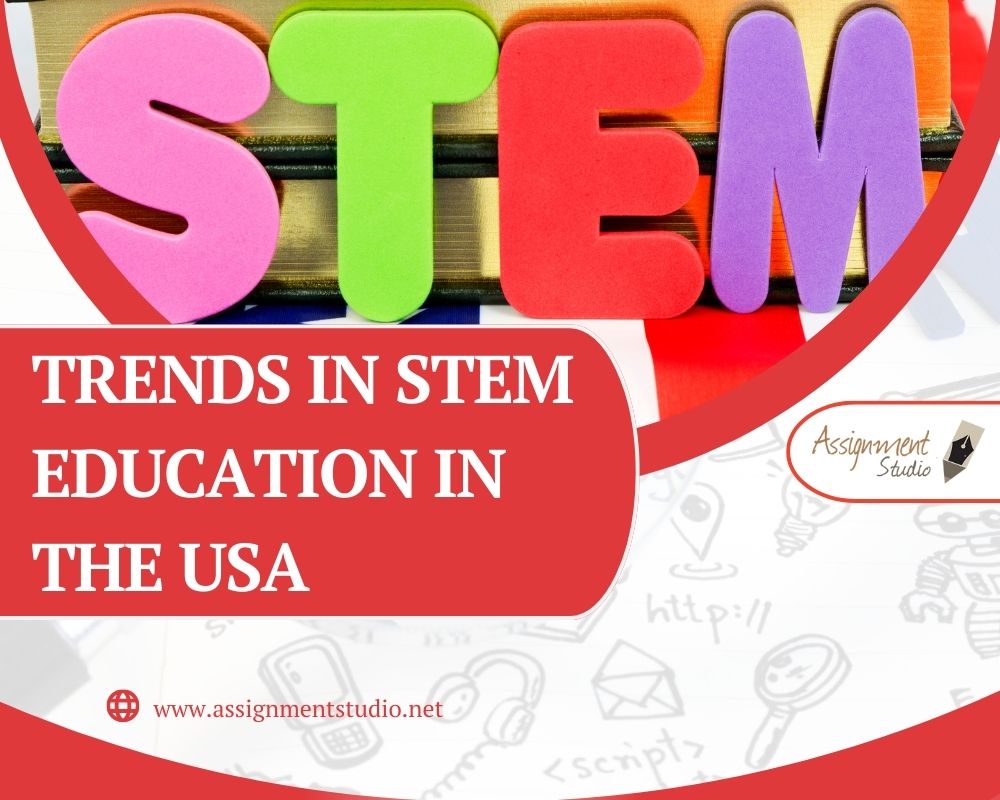
STEM education, which stands for Science, Technology, Engineering, and Mathematics, is a crucial aspect of education in the United States. As technology continues to advance and shape the world we live in, it is essential that students are equipped with the necessary skills to thrive in these fields. There have been several notable trends in STEM education in the USA in 2023. In this blog, we will explore the trends in STEM education in the USA.
Table of Contents
Focus on Inclusivity, Diversity and Equity
There has been a growing emphasis on diversity and inclusion in STEM education. Historically, certain demographics, such as women and minority groups, have been underrepresented in STEM fields. Although we have seen some improvement in the recent year this development will be the key focus throughout the year 2023. According to the National Science Foundation (NSF) and National Center for Science and Engineering Statistics (NCSES), minorities such as Hispanics, Blacks and American Indians or Alaska Natives represent nearly a quarter or 24% of the STEM workforce in 2021, which increased from 18% in 2011.
There are still significant differences in the representation of STEM fields in the workforce, even though these figures indicate an improving trend. The establishment of equity in STEM education is a crucial step towards resolving this issue and providing equal opportunities for students from diverse backgrounds to pursue careers in STEM fields. Efforts are being made to address this imbalance by providing equal opportunities for all students to pursue STEM education. This includes implementing programs and initiatives that target underrepresented groups and provide them with the resources and support they need to succeed.
Overcoming Teacher Shortages
Even before the COVID, teacher shortages were making headlines across the country. The pandemic only made it worse. However, the STEM communities have resorted to some unique ways to deal with these shortages.
A program called UTeach at the University of Texas at Austin is focused on preparing STEM teachers quickly. This program focuses on preparing new educators who are making a career change to become STEM teachers, this program mainly focuses on individuals who already hold a STEM degree. This program and other programs like these are tailored in a way that new potential STEM teachers can quickly earn credentials while also tapping into different markets of potential educators.
Grant Funding for STEM Programs
The increasing grants and funding for STEM programs is another trend this year and beyond. STEM education is hands-on and requires specific technology that obviously doesn’t come cheap. This is one of the reasons why many schools find it hard to fit STEM education into their already tight budgets.
The US Department of Education can assist STEM educators and administrators in finding discretionary funding for STEM education, which can come from both government initiatives and other private sources. Through discretionary and research grants in Fiscal Year 2019, the US Department of Education contributed over $540 million to fund computer science and STEM education.
Robotic Learning Programs and Competitions
As students advance in their STEM education, they study more advanced topics like robotics, which integrate several essential STEM concepts. According to a report published in the International Journal of STEM Education, students who interact with robots will get a deeper and more comprehensive understanding of STEM concepts.
We expect a rise in the use of robots in STEM education in 2023. For students who learn best by doing practical training, robotics can be utilised to teach multiple objectives in a single project while giving them hands-on experience.
Addressing Global Demands
We live in a globalised world, and this connection across borders will grow in the future as well. This has in turn increased the competition for jobs. STEM education is at the heart of that competition and is a fundamental building block of how competitive a country like the United States can be.
STEM Workforce Demands
Another trend is the ongoing demand for STEM professionals, which is particularly concerning when considering global demands. According to the U.S. Department of Labor projects, it is expected that the number of jobs for STEM professionals will increase by 10.8% between the years 2021 to 2031, which is double the demand for non-STEM occupations.
These are some of the examples of STEM occupations:
|
STEM Occupations |
Average Annual Salary |
|
Information Technology Specialists |
$61,355 |
|
Healthcare Professionals |
$67,000 to $89,000 |
|
Financial Analysts |
$75,843 |
|
Web and Software Developers |
$81,602 |
|
Scientists |
$95,770 |
|
Statisticians |
$97,887 |
|
Engineers |
$100,765 |
|
Actuaries |
$114,807 |
|
Data Scientists |
$124,568 |
|
Computer Network Architects |
$128,253 |
|
Statisticians |
$97,887 |
Emerging Technologies in STEM Education
Emerging technologies have revolutionised STEM education, it has provided students with new opportunities for students to engage with STEM concepts in an innovative and exciting way. Let’s explore some emerging technology in STEM education.
The United States of America is lagging behind and even declining when it comes to STEM proficiency compared to the rest of the world, and this could present long-term implications for not only individuals but also the nation as a whole. STEM affects fields including security, healthcare, technology, and engineering. If this continues more than one industry could see a critical skilled labour shortage.
- Virtual and Augmented Reality (VR and AR)
VR and AR technology have transformed how we learn and experience the world around us. These technologies offer students a chance to get an immersive, hands-on learning experience in STEM education.
- Robotics and Automation
Robotics and automation are another key area of innovation in STEM education. In the context of STEM education, robotics and automation offers student opportunities to get hands-on learning and a chance to develop coding, programming and engineering skills.
- Artificial Intelligence and Machine Learning
Artificial intelligence and machine learning are emerging technologies that have transformed the way we think about problem-solving and decision-making. In STEM education, AI and machine learning offer students opportunities to work on complex, data-driven issues and hone their modelling, prediction, and data analysis skills. Personalised learning environments, intelligent tutoring systems, and other innovative educational tools can be developed with the help of these technologies.
- Digital Twins
Digital Twins is a virtual replica of a physical object, system, or process that can be used to simulate and predict performance. Technology is set to revolutionise the way students learn about complex systems and their behaviours. Educators can use this technology to create realistic simulations and models that will help students explore and understand systems safely and in a controlled environment.
- The Metaverse
The Metaverse is an emerging technology that will revolutionise STEM education. The term “metaverse” refers to a virtual world that combines social media, gaming, and virtual and augmented reality to create immersive settings and interactive experiences. This makes it possible to create learning experiences that are more dynamic, engaging, flexible and tailored to the requirements and interests of individual students.
Conclusion
In conclusion, STEM education in the USA is evolving to meet the demands of a rapidly changing world. By adopting hands-on learning experiences, integrating interdisciplinary approaches, and promoting diversity and inclusion, educators are equipping students with the skills they need to excel in STEM fields. These advancements in STEM education are worth celebrating as they pave the way for a more innovative and inclusive future.







